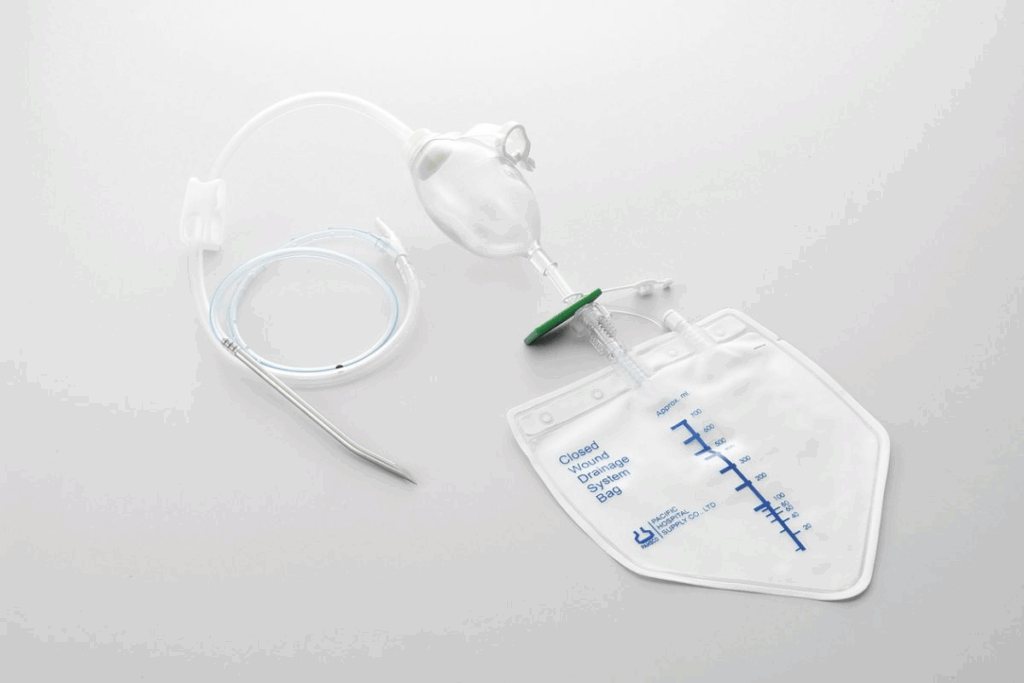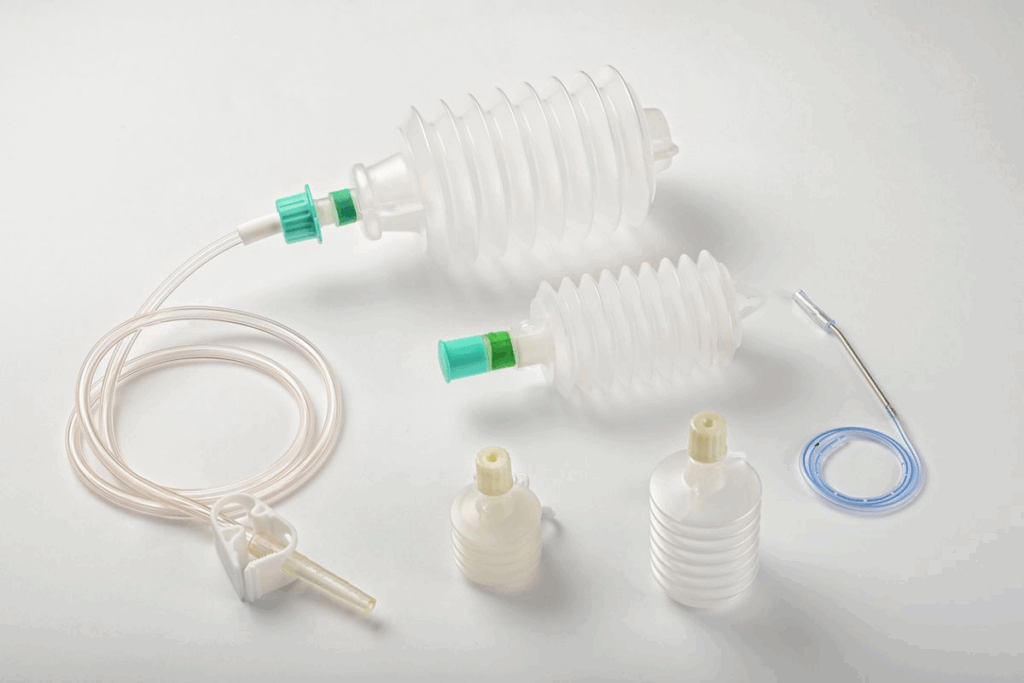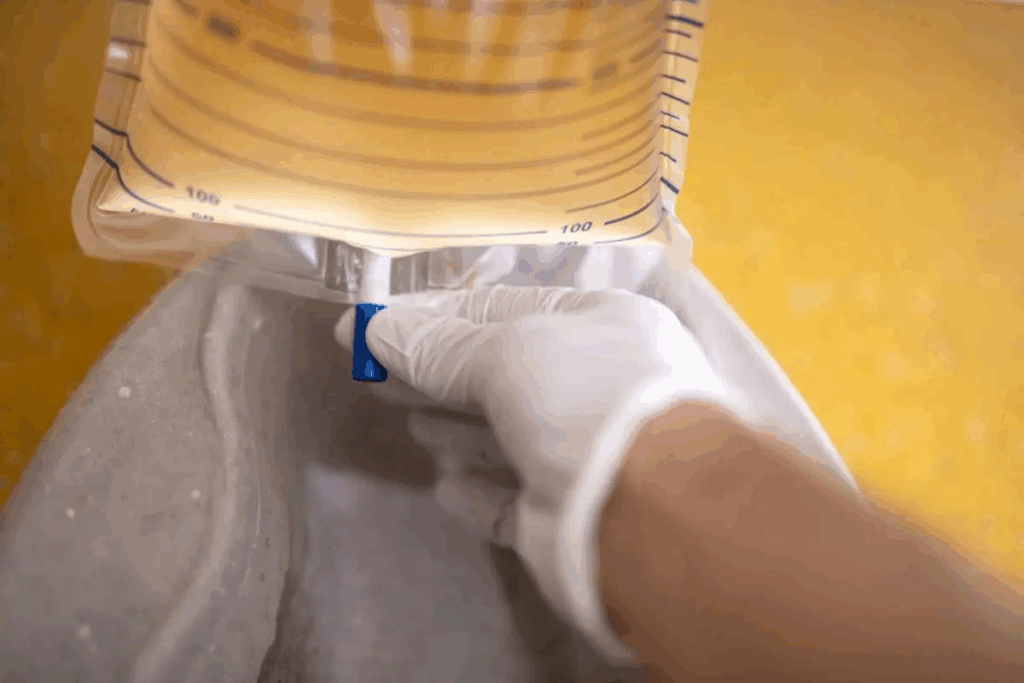Last Updated on October 23, 2025 by mcelik

After surgery or interventional drainage, taking care of your gallbladder drainage bag is key. At Liv Hospital, we know how tough post-surgery care can be. We’re here to help you through it.
We give you step-by-step instructions for your percutaneous gallbladder drainage. This ensures your safety and the best recovery results.
We want to give you the knowledge and confidence for post-surgery care. This way, your recovery can be as comfortable as possible.

There are many types of gallbladderHardest Cancers to Diagnose Early: Powerful Challenges Reviewed drainage systems. Each has its own features and care needs. Knowing these differences helps patients manage their condition well and avoid problems.
Percutaneous gallbladder drainage and cholecystostomy tube placement are similar. Percutaneous cholecystostomy (PCT) tube placement puts a tube through the skin into the gallbladder. It’s used to drain infected bile or relieve blockages. This is for patients who can’t have surgery right away.
A cholecystostomy tube is the tube used in this procedure. It stays in until the patient gets better or a better treatment is found. Taking care of these tubes means keeping the site clean and watching for infection or tube problems.
After a cholecystectomy, some patients need a drainage system. Post-cholecystectomy drainage systems manage bile leakage or complications. They keep the bile ducts clear and working properly.
These systems use different tubes or drains based on the complication. Proper care means knowing how to empty and clean the collection bag and watching for infection signs.
It’s important to know how your gallbladder tube or drainage system works. These systems drain bile or fluids from the gallbladder or bile ducts into a bag.
The system might work by gravity or need flushing to stay open. Patients must follow their healthcare team’s care instructions to avoid problems.

Proper care of your cholecystostomy drainage bag starts with the right medical supplies. You need a system to keep things clean and efficient. This is key for managing your gallbladder drainage tube after surgery.
To care for your gallbladder drainage bag well, you’ll need these essential supplies:
Having these supplies ready will help keep your care area clean and safe.
Having a specific area for your drainage bag care can make your daily routine easier. This care station should be:
By having a dedicated space, you can reduce stress and follow the right care procedures.
To make your daily care routine smoother, consider these tips for organizing your supplies:
By staying organized, you can focus on your recovery and manage your gallbladder drainage bag with confidence.
Managing your gallbladder drainage bag is key to a healthy recovery. It’s important to empty and clean it daily. This keeps you clean and helps track your healing.
Emptying your gallbladder drainage bag is easy but needs focus. Here’s how to do it:
Cleaning your drainage bag often is key to avoiding infections. Here’s how to clean it:
It’s important to watch the output from your gallbladder drainage bag. Here’s what to do:
Key Points to Record:
By following these steps and keeping a record, you help your healthcare team watch your recovery. They can quickly spot and fix any issues.
Keeping your cholecystostomy tube site clean is key to avoiding infections and keeping the tube in place. We’ll show you how to keep the area clean and safe.
Cleaning the area around the tube is very important. Use a mild soap and warm water to clean it gently. Do this every day, or as your doctor tells you.
To clean the site:
Changing dressings with a sterile technique is very important. It helps prevent bacteria from getting into the site. Change your dressing as your doctor tells you, usually every 2-3 days or when it gets dirty.
To change the dressing:
It’s important to keep the tube in place. Use the securing device provided by your healthcare team. Check the tube every day to make sure it’s secure and not twisted.
If you see any problems with the tube’s position or security, call your healthcare provider right away.
Flushing your gallbladder tube is key to keeping it working right. It stops blockages and infections. We know it can be tough, but with the right help, you can keep your system healthy.
Flushing your gallbladder tube keeps it open and clean. It stops debris and bacteria from building up. This keeps your system working well and lowers the chance of problems.
How often you need to flush depends on your health and the tube type. Doctors usually say to do it daily or as they tell you. Always listen to your doctor about flushing your tube.
To flush your gallbladder tube right, follow these steps:
If your gallbladder tube gets blocked, don’t worry. Here’s how to fix it:
Knowing how to deal with blockages helps keep your drainage system working well.
| Issue | Troubleshooting Step | Action |
| Blockage | Check for kinks or twists | Adjust the tube |
| Blockage | Flush with saline solution | Gently inject saline |
| Blockage | Contact a healthcare provider | Seek medical assistance |
Managing your gallbladder drainage bag is key to staying independent and comfortable. Adapting to life with a medical device can be tough. But with the right tips, you can handle your daily tasks with ease.
Showering and bathing with a gallbladder drainage bag need some care to avoid infections. Always cover the drainage bag with a waterproof cover to keep water out.
When bathing, avoid getting the tube site wet. Use a sponge bath or a shower chair to keep the tube in place.
Choosing the right clothes is important for comfort with your gallbladder drainage bag. Opt for loose-fitting clothing to avoid pressure on the bag or tube site.
| Clothing Type | Benefits |
| Loose-fitting shirts and dresses | Reduces pressure on the drainage bag |
| Elastic waistbands | Ease of use and comfort |
| Specialized clothing with hidden pockets | Secures the drainage bag discreetly |
Sleeping with a gallbladder drainage bag means placing it to avoid kinking or dislodging. Consider sleeping on the opposite side of the tube insertion for comfort and safety.
Using a body pillow or adjusting your sleep can also help manage the bag at night.
It’s important to watch your percutaneous cholecystostomy tube for any problems after surgery. Knowing the signs of trouble helps you get help fast if you need it.
Knowing what normal drainage looks like is key. Normal drainage is usually a mix of bile and can change in thickness. But big changes in color, thickness, or amount might mean something’s wrong.
Look out for these signs of trouble:
| Drainage Characteristics | Normal | Abnormal |
| Color | Bile-colored | Significantly darker or lighter, presence of blood |
| Consistency | Varies, typically fluid | Thick, sludgy, or contains debris |
| Volume | Variable, as prescribed | Significant increase or decrease |
| Odor | Typical bile odor | Foul or unusually strong odor |
Infection at the tube site is serious and needs quick action. Look out for these signs:
Tube displacement is another issue to watch for. Signs include:
If you think your tube is out of place, get medical help fast to avoid more problems.
Dealing with problems like leakage, odor, and skin irritation from your gallbladder drainage bag can be tough. But there are ways to fix these issues. We’ll share tips on how to stop leakage, handle odor, and soothe skin irritation around the tube site.
Leakage from your gallbladder drainage bag is a big worry. To fix it, make sure all connections are tight and the bag is securely attached to your body. Look for any damage or wear on the tube or bag.
Odor from the drainage system can be embarrassing and uncomfortable. To tackle this, keep the bag and tube clean. Use products or sprays made for medical drainage systems to control the smell.
Tips for managing odor:
Skin irritation around the tube site can be painful and uncomfortable. To handle this, keep the area clean and dry. Use sterile gauze or dressings to protect the skin. Also, apply topical creams or ointments as advised by your healthcare provider.
Knowing when to get medical help is key to avoiding problems. After gallbladder surgery, watch your health closely. This will help you know when to seek help.
Some symptoms mean you need to see a doctor right away. These include:
If you see any of these signs, don’t wait to get medical help. Call your doctor or go to the emergency room if you’re not sure.
It’s important to watch your drainage closely. Tell your doctor if you notice:
Follow-up visits are important for checking on your recovery. To get ready:
Being prepared will help you get the most out of your follow-up visits. This ensures a smooth recovery.
Having a cholecystostomy tube is not just a short-term thing. It’s a long-term care journey. Understanding the long-term effects is key to a good quality of life.
How long a cholecystostomy tube stays in can vary a lot. It’s meant to be temporary until the gallbladder issue gets better or until surgery is done. The doctor decides when to take it out based on how you’re doing and tests.
Factors influencing tube removal include:
Getting a new tube is a common part of caring for a cholecystostomy tube. These procedures happen in a clinic and are done to keep the tube working properly.
During a tube exchange, you can expect:
New tech has brought better and more comfortable cholecystostomy tubes. These changes aim to make life better for patients.
Some of the improvements include:
These updates show the hard work to make tube care better. They help make long-term care easier for patients.
Caring for your gallbladder drainage bag after surgery is key to your recovery. At Liv Hospital, we stress the need for proper care to avoid complications. This ensures a smooth healing process.
We’ve discussed the basics of caring for your drainage bag, like emptying and cleaning it daily. It’s also important to watch for any signs of trouble and know how to handle common issues. Keeping your care area clean and organized helps prevent infections and ensures good drainage.
Good care for your drainage bag means paying close attention and following your healthcare team’s advice. Stay alert and take action if you notice anything odd. This proactive approach is vital for your health.
At Liv Hospital, we’re here to support you every step of the way. We offer top-notch healthcare and help for international patients. Together, we aim to give you the best care for your drainage bag and help you recover well.
A percutaneous cholecystostomy tube is a drainage tube inserted through the skin into the gallbladder. It’s used to drain infected bile or other fluids. It’s often used to treat acute cholecystitis temporarily.
To care for your gallbladder drainage bag, empty and clean it daily. Measure and record the drainage output. Also, ensure the tube site is clean and secure.
Signs of infection include redness, swelling, increased pain, or pus around the tube site. If you notice any of these symptoms, seek medical attention.
Flushing frequency depends on your healthcare provider’s instructions. It’s usually done to maintain tube patency and prevent blockages.
Yes, but take precautions to keep the tube site dry. Cover the site with a waterproof dressing or plastic wrap.
If your drainage bag leaks, check the connections and secure them. If the leak persists, contact your healthcare provider for assistance.
To manage odor, ensure regular cleaning of the drainage bag. Consider using odor-controlling products or deodorizers designed for medical drainage systems.
Seek medical help immediately if you experience severe pain, signs of infection, tube displacement, or significant changes in drainage output or characteristics.
During a tube exchange, your healthcare provider will remove the existing tube and replace it with a new one. This is done under sterile conditions and with minimal discomfort.
The duration depends on your underlying condition and treatment plan. Your healthcare provider will advise on the expected timeline for tube removal or long-term management.
Subscribe to our e-newsletter to stay informed about the latest innovations in the world of health and exclusive offers!
WhatsApp us